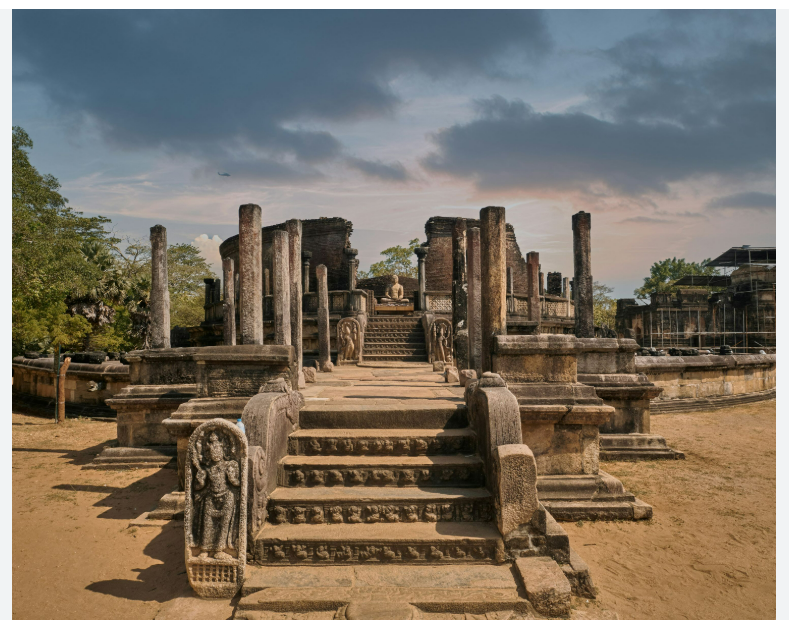
Nestled in the heart of Sri Lanka’s North Central Province, Polonnaruwa stands as a testament to the island’s golden age of history. This ancient city is a UNESCO-recognized World Heritage Site and once was a thriving capital and center of culture, trade, and religion for both the Chola and Sinhalese kingdoms.
Soaking up the wealth of history, Polonnaruwa greets the traveler with wonderfully preserved ruins: from grand palaces and masterfully carved stupas to serenely symmetric statues of Buddha and an imaginative irrigation system. A stroll among sprawling archaeological ruins whisks one through the ages and presents a vision of what medieval civilization was like in Sri Lanka.
Whether one is a history enthusiast, an architecture buff, or just looking for a quiet retreat, Polonnaruwa has something for everyone-a heady mix of culture, spirituality, and nature. In this article, we will explore the best places to visit in Polonnaruwa, sharing tips and information that will help one get the most out of this timeless treasure trove.
Table of Contents
Quick Facts About Polonnaruwa
Location:
Polonnaruwa is situated in the North Central Province of Sri Lanka, about 216 km northeast of Colombo.
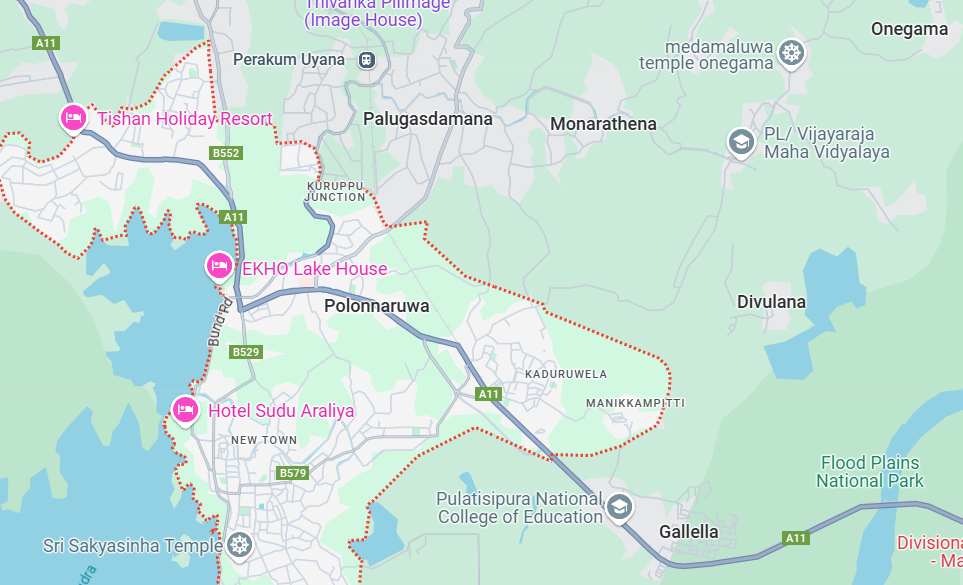
Historic Importance:
Once the second capital of ancient Sri Lanka, after Anuradhapura, Polonnaruwa prospered from the 11th to the 13th century under the Chola and then the Sinhalese.
It was identified as a UNESCO World Heritage Site in 1982 for its outstanding cultural and historical value.
Top Places to Visit in Polonnaruwa
- The Royal Palace of King Parakramabahu
This was a magnificent palace and built by the ruler King Parakramabahu I in the 12th century.
You can see its solid foundations and remnants of what is believed to be a seven-story building with over 1,000 rooms.
Don’t miss: The minutely carved walls speaking much about ancient Sri Lanka’s architectural brilliance. - Gal Vihara
It boasts four statues of the Buddha carved into one wall of granite, representing seated, standing, and reclining poses of Buddha, signifying different stages in his life. Why visit: Gal Vihara is an ancient work of art in Sri Lankan sculpture and a quiet spiritual place.
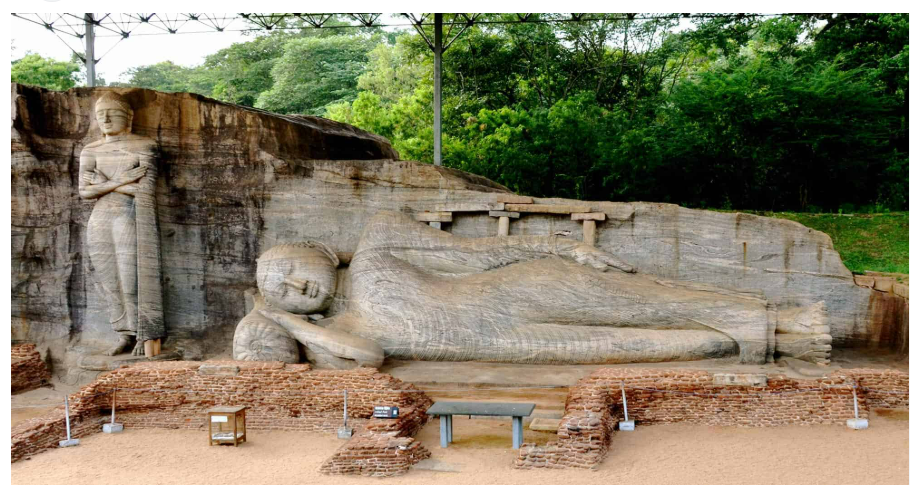
- Vatadage
A circular relic house believed to have housed the Sacred Tooth Relic of Buddha.
The structure is rich in stone carvings; for instance, the moonstone at the entrance. Highlight: four Buddha statues pointing towards the four cardinal directions. - Rankoth Vehera
Built during the reign of King Nissanka Malla, this giant stupa measures 55 meters.
It really resembles the similar stupas famous in Anuradhapura and is definitely one of the most important symbols related to Buddhist architecture in Polonnaruwa.
Don’t miss: various inscriptions can be found along the stone pillars surrounding the stupa.
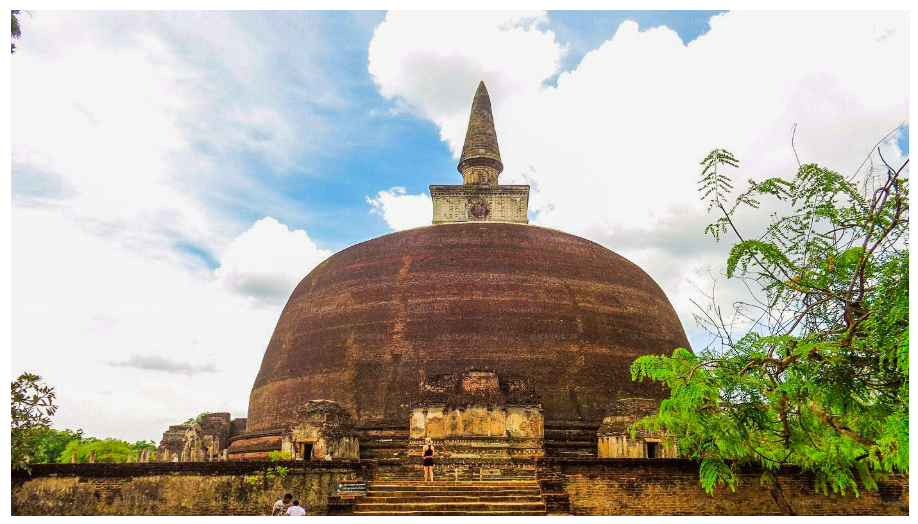
- Nelum Pokuna (Lotus Pond)
A beautifully designed lotus-shaped pond utilized by monks for bathing and rituals.
Its design is unique and a reflection of ancient Sri Lankan engineering ingenuity and aesthetics.
Why visit: It’s one of the most picturesque spots in Polonnaruwa. - Lankatilaka Temple
A grand structure with towering walls and a colossal standing Buddha statue inside.
The temple is a combination of Buddhist and Hindu architectural elements.
Pro tip: It is best to visit it during the golden hour for some great snaps. - Pothgul Vihara
Known as the ancient library monastery, this site is believed to have stored sacred texts.
Its circular structure and surrounding ruins make it a unique attraction.
Highlight: The statue near the site, thought to be of King Parakramabahu or a sage.
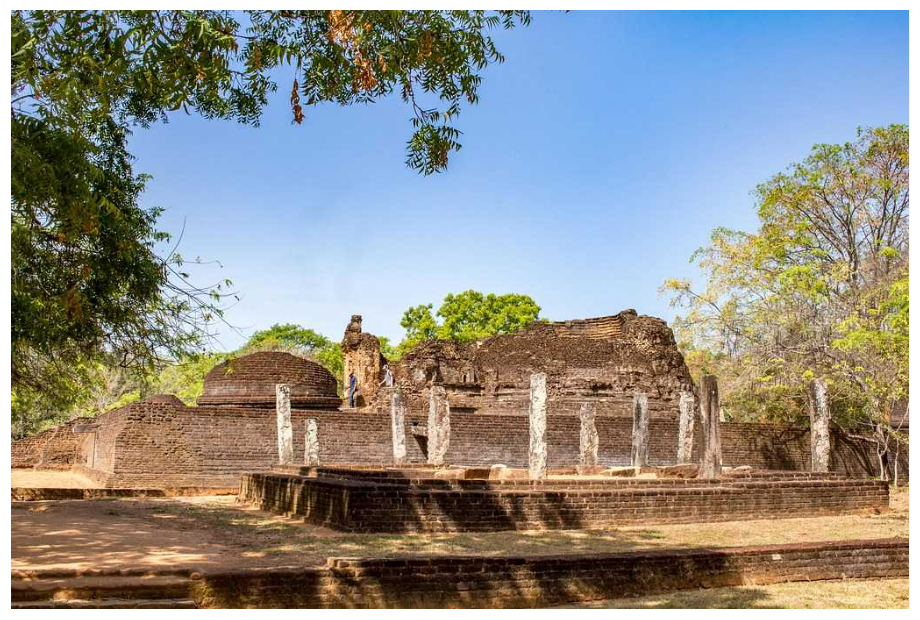
- Tivanka Image House
Famous for its well-preserved 12th-century murals depicting Jataka tales.
The statue of Buddha inside is slightly curved (“Tivanka”), giving the shrine its name.
Why visit: It is among those few glimpses into ancient Buddhist art. - Archaeological Museum
A good place to begin learning about the history and significance of Polonnaruwa before touring the ruins.
The house has artifacts, carvings, and models of the ancient city.
Must-see: Its miniature replica of the whole ancient city.
Tips for Visiting Polonnaruwa
- Best Time to Visit
Pay a visit either early in the morning-that is, from 7 AM to 10 AM-or late afternoon, that is, from 3 PM to 6 PM-to avoid the midday heat.
The months of May to September are comparatively cooler and hence suitable for sightseeing - Dress Accordingly
Use lightweight, breathable clothes to be comfortable in the tropical climate.
Cover your shoulders and knees while visiting temples and sacred places for respect. - Essentials to Carry
Water bottles: Be sure to take enough water as it may become quite hot during a tour.
Sunscreen and hat: Protection from the sun.
Sports shoes: It’s a lot of walking and cycling, thus solid shoes or sandals are mandatory.
Camera or Smartphone: Taking awesome pictures is inevitable.
Insect repellents: Mosquitoes may interrupt in the evening - Easy Get Around Polonnaruwa
By Bicycle: One of the most enjoyable and environmentally friendly ways to see the ancient city is by renting a bicycle. There are several rental shops near the main entrance.
By Tuk-tuk: If cycling isn’t your style, hire a tuk-tuk and explore in comfort.
On Foot: While walking is an option, the distances between attractions can be long, so plan accordingly. - Hire a Guide
A knowledgeable guide can add to your experience by sharing interesting historical tidbits and stories about the ruins.
Alternatively, download a detailed travel app or bring a guidebook for self-exploration.
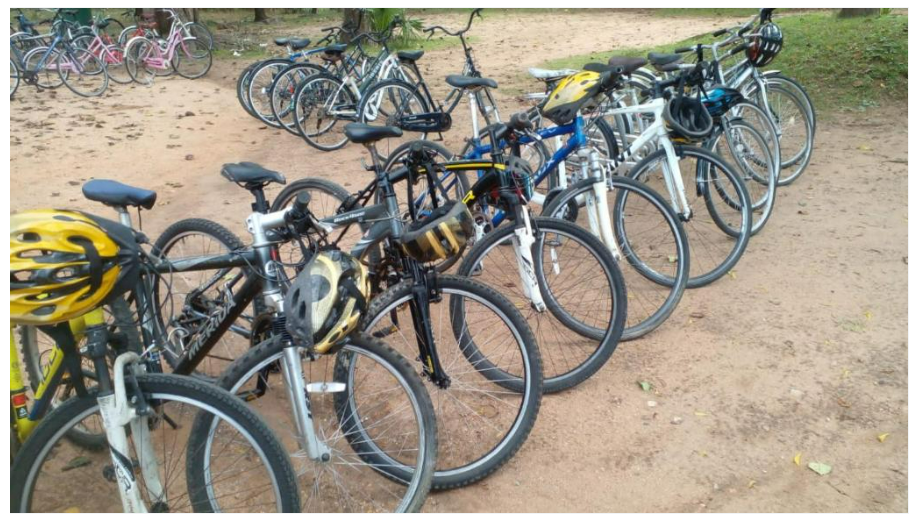
Nearby Attractions
Minneriya National Park
Distance: Approximately 30 km (45-minute drive) from Polonnaruwa.
Why Visit: Famous for the stunning “Gathering of Elephants,” when hundreds of elephants gather near the Minneriya Reservoir during the dry season, from June to September.
Kaudulla National Park
Distance from Polonnaruwa: Approximately 35 km. (50 minute drive).
Why Visit: This is considered an excellent alternative to Minneriya and for similar wild-life sightings. It’s particularly popular in the dry season when elephants migrate.
Scenic Jeep Safaris through thick forests and grasslands.
Somawathiya National Park
Distance: approximately 35 km from Polonnaruwa, 1 hour’s drive.
Why visit: It is home to the Somawathiya Stupa, which is said to house a relic of the Buddha’s tooth, set amidst scenic river landscapes and teeming with wildlife.
Conclusion
In continuation with the richness in the history of Polonnaruwa, the above places in its vicinity help discover the grandness of natural beauty, varied wildlife, and holy spirit of the country. Ranging from safaris full of excitement to a quieter ascent up some old, forsaken fortresses, it provides depth and variety to every itinerary.
FAQs
What is Polonnaruwa famous for?
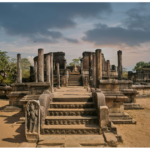
Polonnaruwa is renowned for its ancient ruins, including stunning Buddha statues, royal palaces, and massive man-made reservoirs, all reflecting Sri Lanka’s golden past.
Is it worth visiting Polonnaruwa?
Absolutely! Polonnaruwa is like walking through a living museum—a perfect blend of history, culture, and tranquility.
What is the best time to visit Polonnaruwa?
Visit Polonnaruwa between May and September for pleasant weather, and explore early mornings or evenings to beat the heat.
How long should I spend in Polonnaruwa?
To truly soak in the sights, 4-6 hours is ideal, but if you’re a history buff, a full day gives you more time to explore at your own pace.
Can I rent a bike to explore Polonnaruwa?
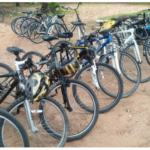
Yes! Renting a bike is a fantastic way to explore the ancient ruins, offering a leisurely and eco-friendly experience.
